
Balsam Woolly Adelgid in Michigan
DOWNLOADMay 28, 2024 - Deborah McCullough, Professor, Dept. of Entomology and Dept. of Forestry, Michigan State University and Bill Lindberg, Christmas Tree Educator, Michigan State University Extension
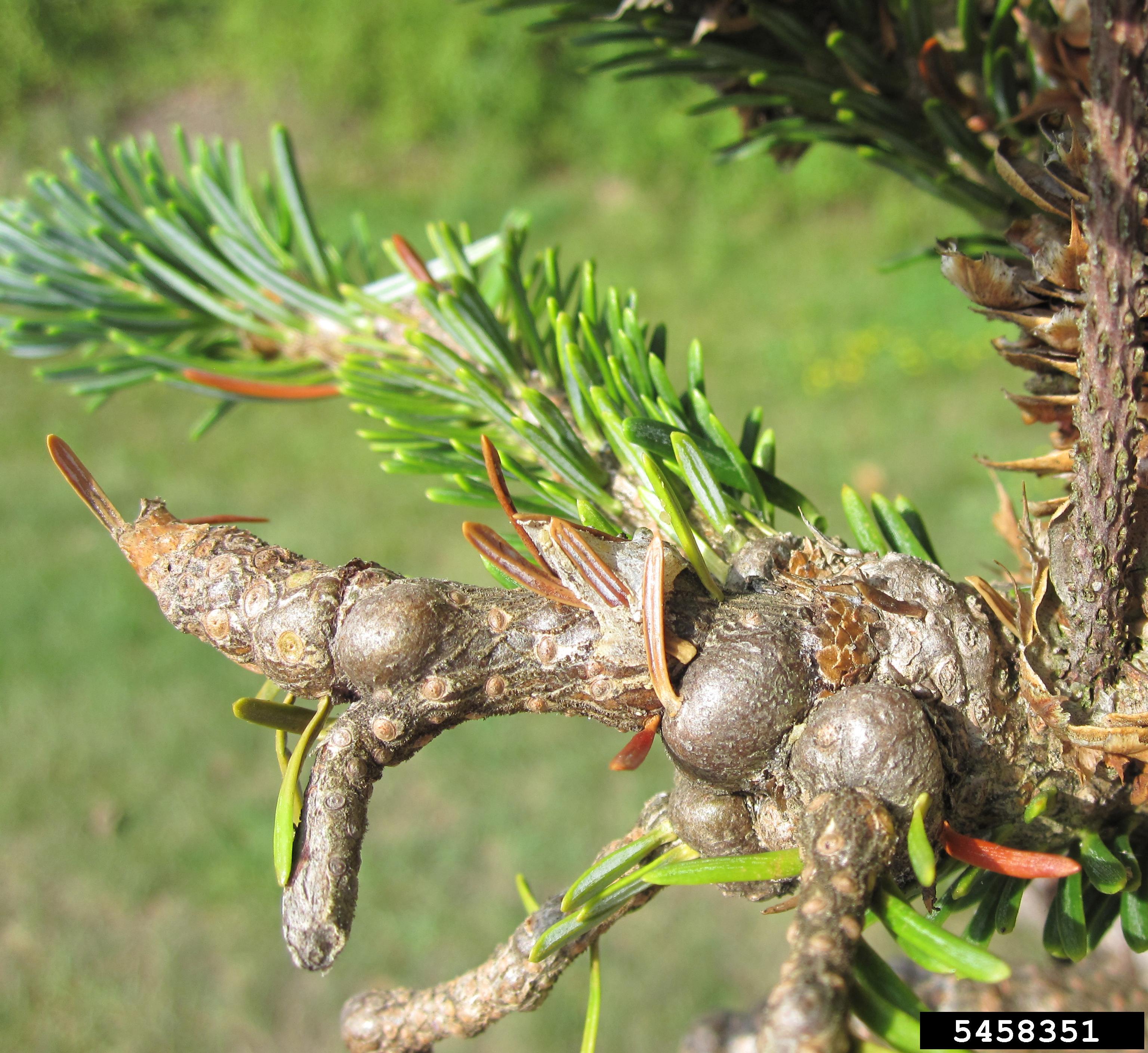
Established infestations of balsam woolly adelgid (BWA), Adelges piceae (Ratzeburg), an invasive sap-feeding insect, were identified in lower Michigan in fall 2023. This tiny insect is native to Europe but has probably been introduced into North America multiple times (5). It was first reported in Maine in 1908 after arriving around 1900 on nursery stock imported from Europe (1). Infestations were subsequently reported from Nova Scotia, Canada in 1910, California in 1928, Virginia in 1957 and Idaho in 1983 (7). As of 2020, this pest was established in at least 12 U.S. states in the eastern, Pacific Northwest and Intermountain regions, as well as eight Canadian provinces (1). However, it was not previously known to be established in the Lake States region of the U.S. or in central Canada (7).
In 2021, BWA was discovered on fir landscape trees that were probably imported from an infested state and then planted in a residential area in Lower Michigan. Those infested trees were removed and destroyed. Subsequent surveys of fir trees in this area were conducted over multiple years. No additional trees with BWA were found, confirming successful eradication of the infestation.

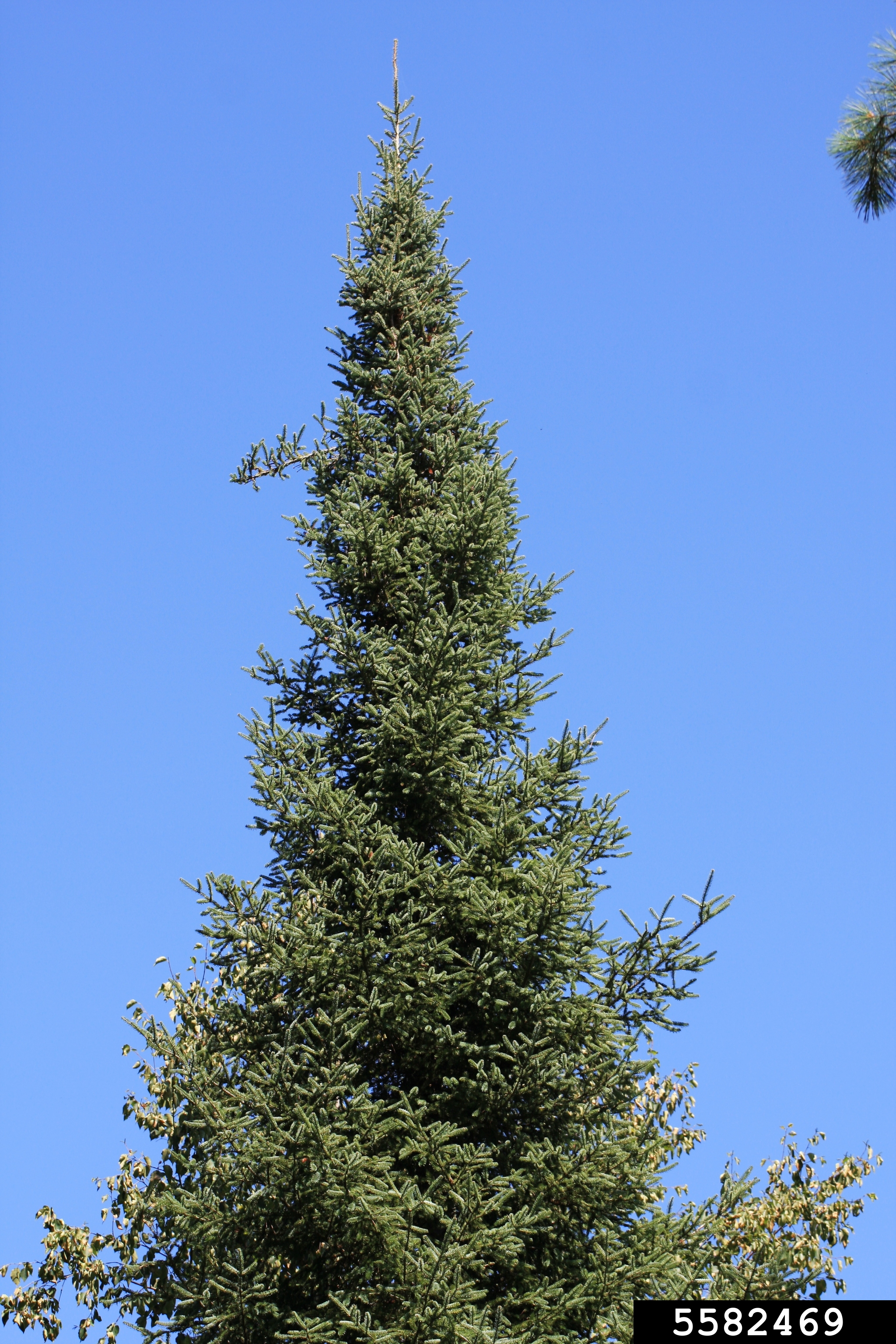
In September 2023, however, approximately 50 balsam fir trees infested with BWA were found on forested land in southern Missaukee County. Since then, more infestations of BWA have been identified on balsam fir in forests in Missaukee and Clare counties. In addition, BWA was detected on young Fraser fir trees in a Christmas tree farm in Oceana County in October 2023 (6). Surveys to assess the distribution and extent of BWA infestations were launched in December 2023 and are continuing. To date, infestations have been patchy and localized, affecting anywhere from five or fewer trees to more than 100 trees in a given site.
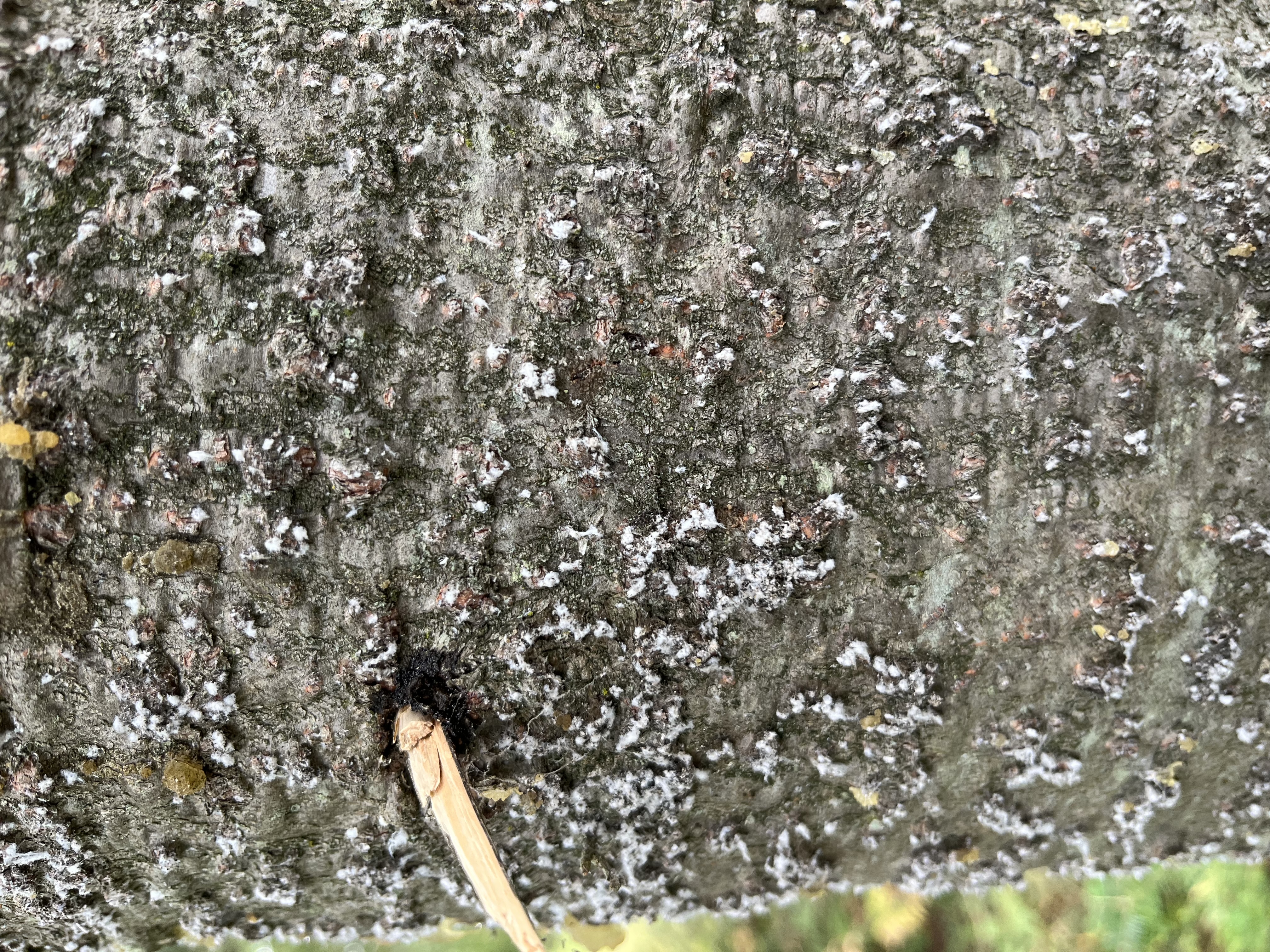.jpg?language_id=1)
What trees are hosts for BWA?
Any true fir species, including balsam fir, Abies balsamea, and Fraser fir, Abies fraseri, can be colonized by BWA. All age and size classes of firs can be infested, including seedlings, saplings, pole-sized trees and large, mature trees. White fir, Abies concolor, can be colonized by BWA although it appears to tolerate BWA better than most other fir species (10). Douglas-fir, Pseudotsuga menziesii, is not a true fir and is not a host of BWA.
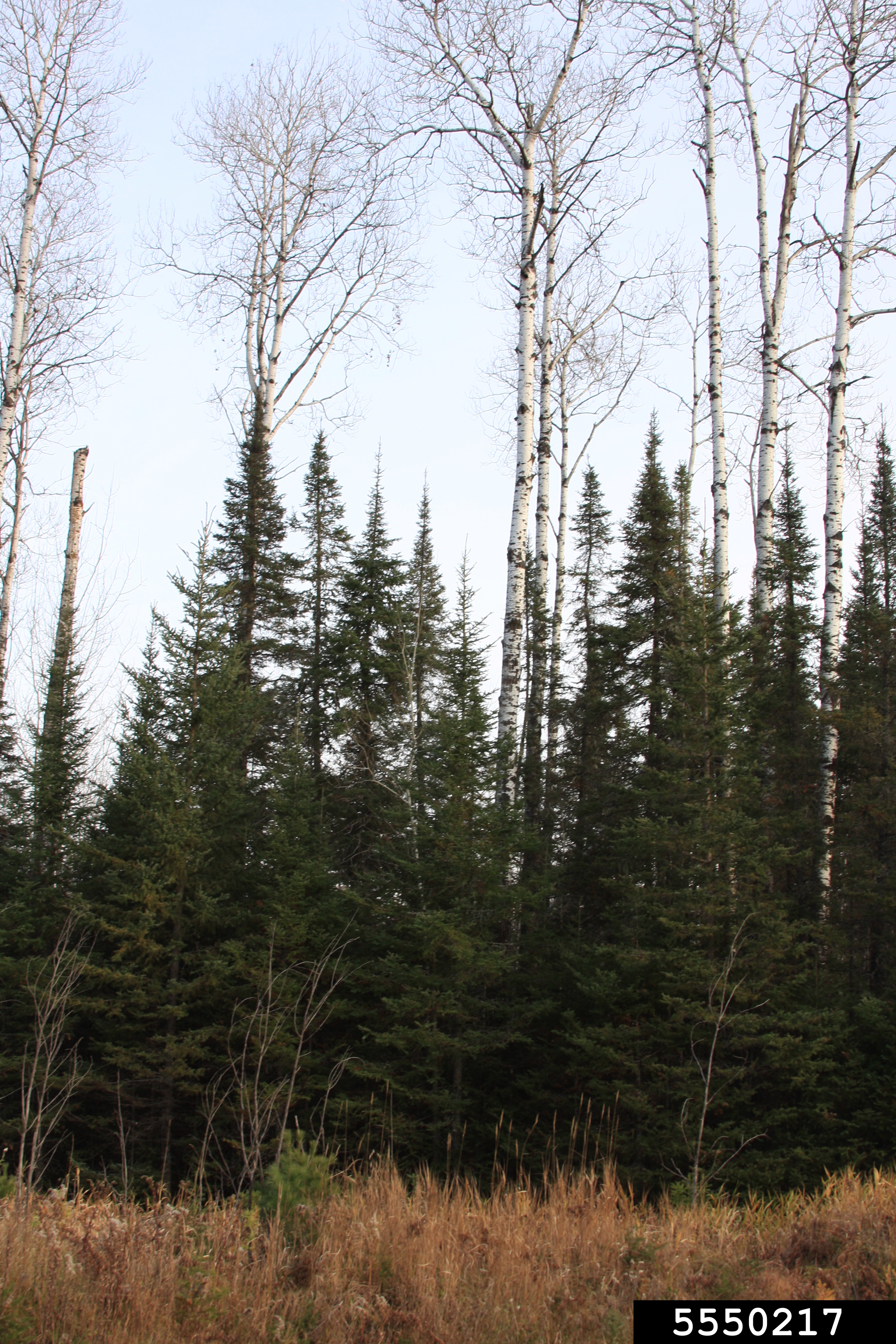
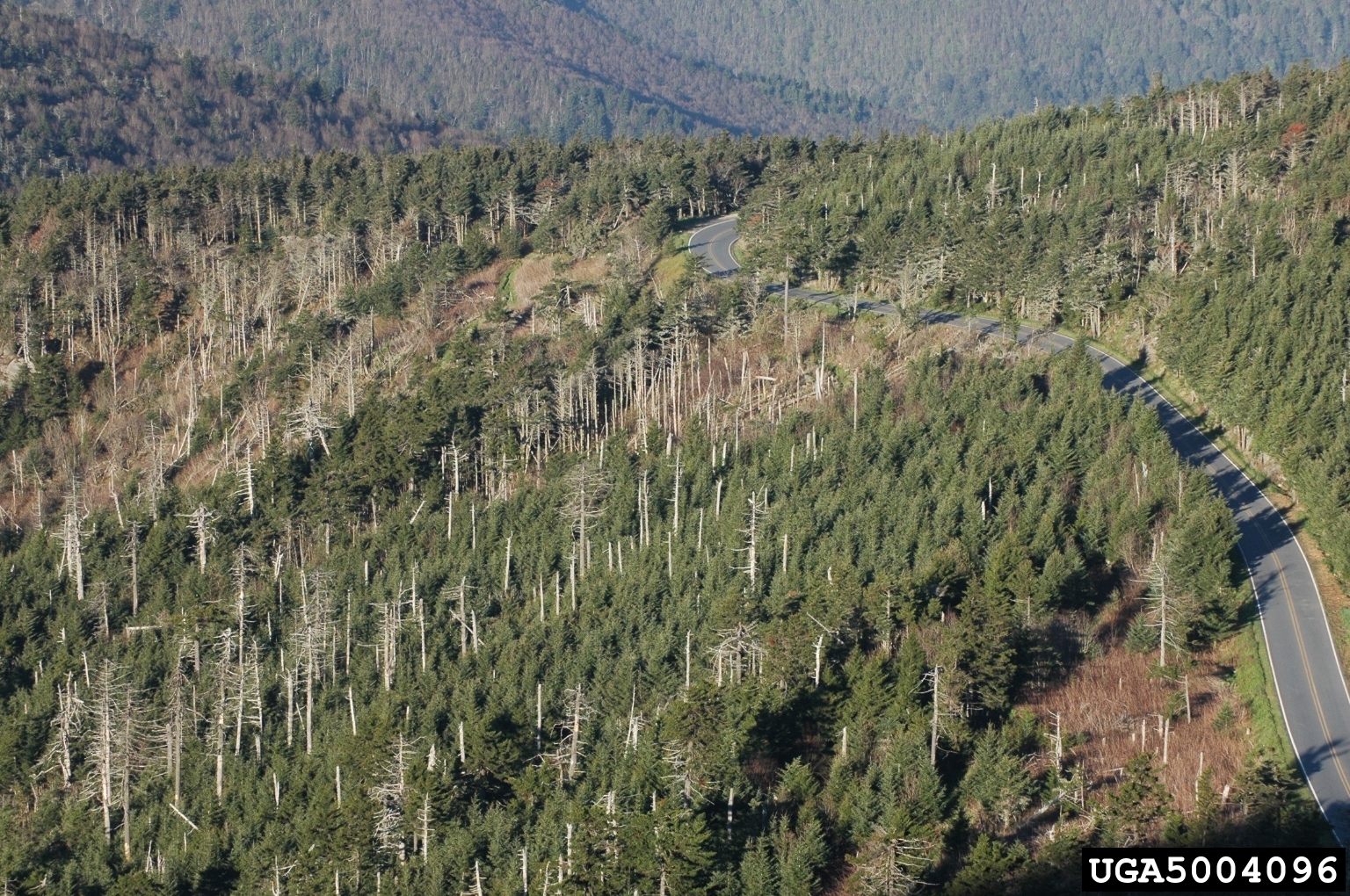
In Michigan, almost 2.1 billio balsam fir trees (> 1-inch diameter at breast height) with a total basal area of more than 107 million square feet grow on 365,410 acres of forested land (12) and thousands more have been planted in landscapes. Fraser fir, while not native to Michigan, is a high value Christmas tree species grown on more than 11,500 acres. Approximately 13.5 million Fraser fir, balsam fir and Concolor fir Christmas trees are harvested annually by Michigan growers (6).
How does BWA reproduce and what is the life cycle of BWA?
In North America, all BWA are females and reproduction is parthenogenetic. In other words, there are no males and no mating occurs. Eggs are genetically identical to each other and to the mother. Unfortunately, this means that even a single BWA can start a new infestation.
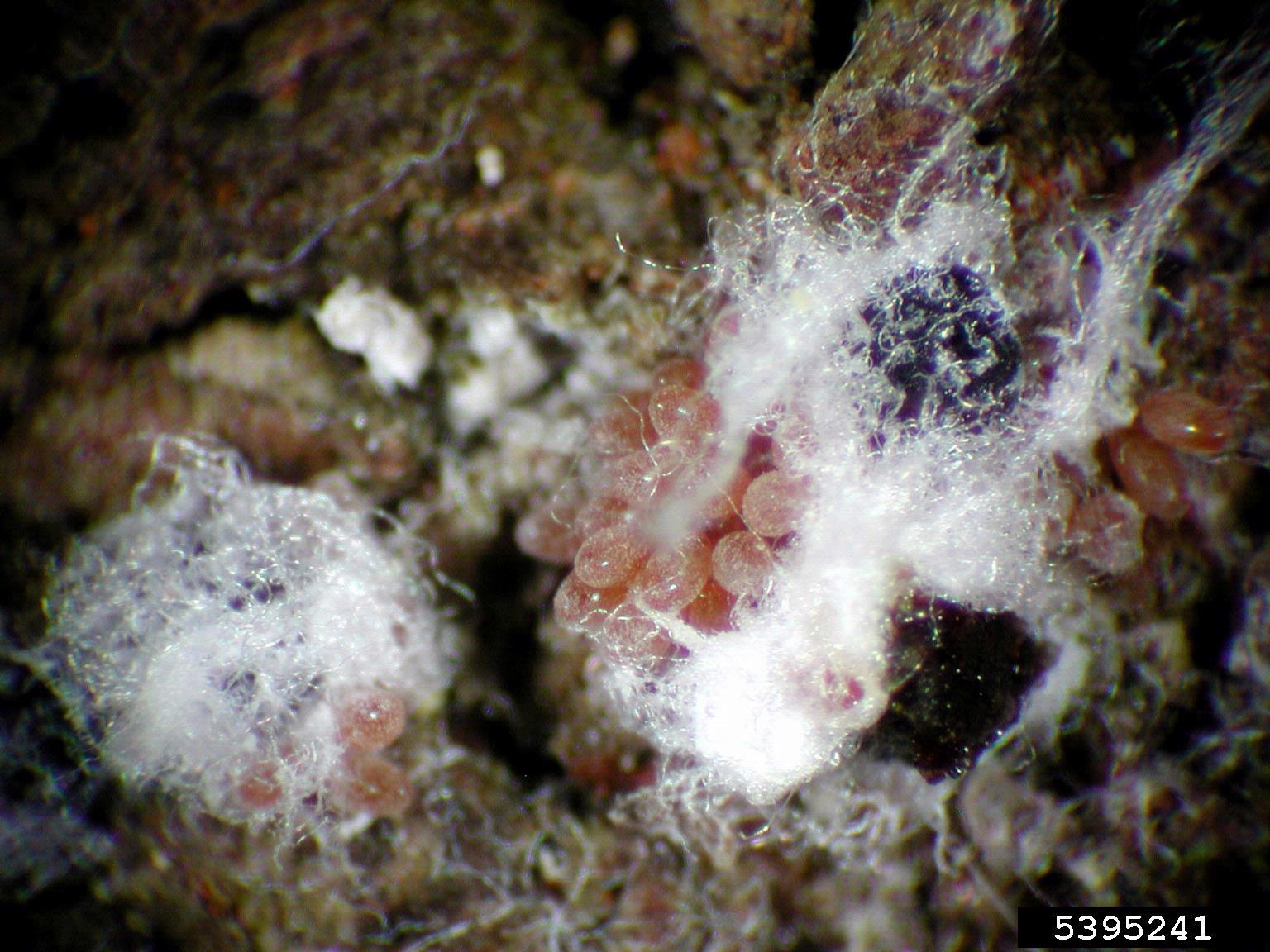
Two BWA generations occur annually in much of eastern Canada, the northeastern U.S. and high elevation areas with short growing seasons in western North America, but three BWA generations per year occur in other regions where the climate is warmer (2,8,9,10). In southern Nova Scotia, the first BWA generation matures and lays eggs between mid-May and early June, while the second generation of adults lays eggs in September (8). In North Carolina where temperatures are higher and the growing season is longer, overwintering nymphs mature and lay eggs in March and April (11). A second generation occurs in mid-summer and a third generation occurs in late summer and early fall. Not all BWA develop at the same rate in any location. Life stages and generations may overlap during much of the growing season. We expect to see two and possibly three generations of BWA per year in Michigan.
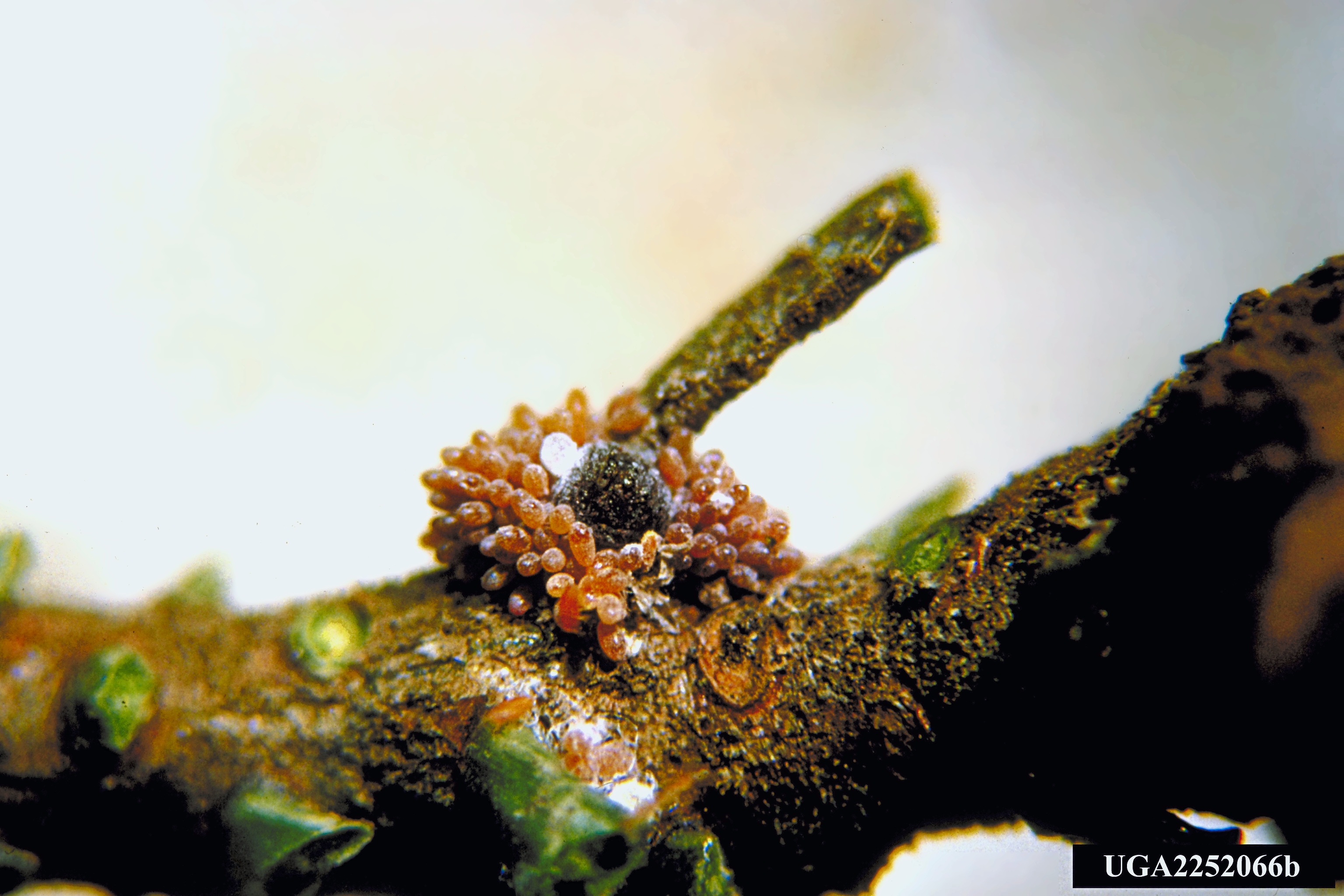
Immature BWA nymphs (first instars) overwinter on infested trees. Overwintering nymphs are black with a line of white wax that runs down the middle of their back and around the edges of their bodies. In spring, these nymphs feed and develop, eventually maturing into plump, purplish-black adults. As nymphs and adult adelgids feed, filaments of white wax (“wool”) are secreted from pores on their bodies. This wax accumulates around the adelgids, providing protection from harsh weather and predators. The first BWA generation matures in four to eight weeks and lays eggs. While each BWA can potentially lay up to 240 eggs, most females probably lay no more than 100 eggs in the field (2,3,11).
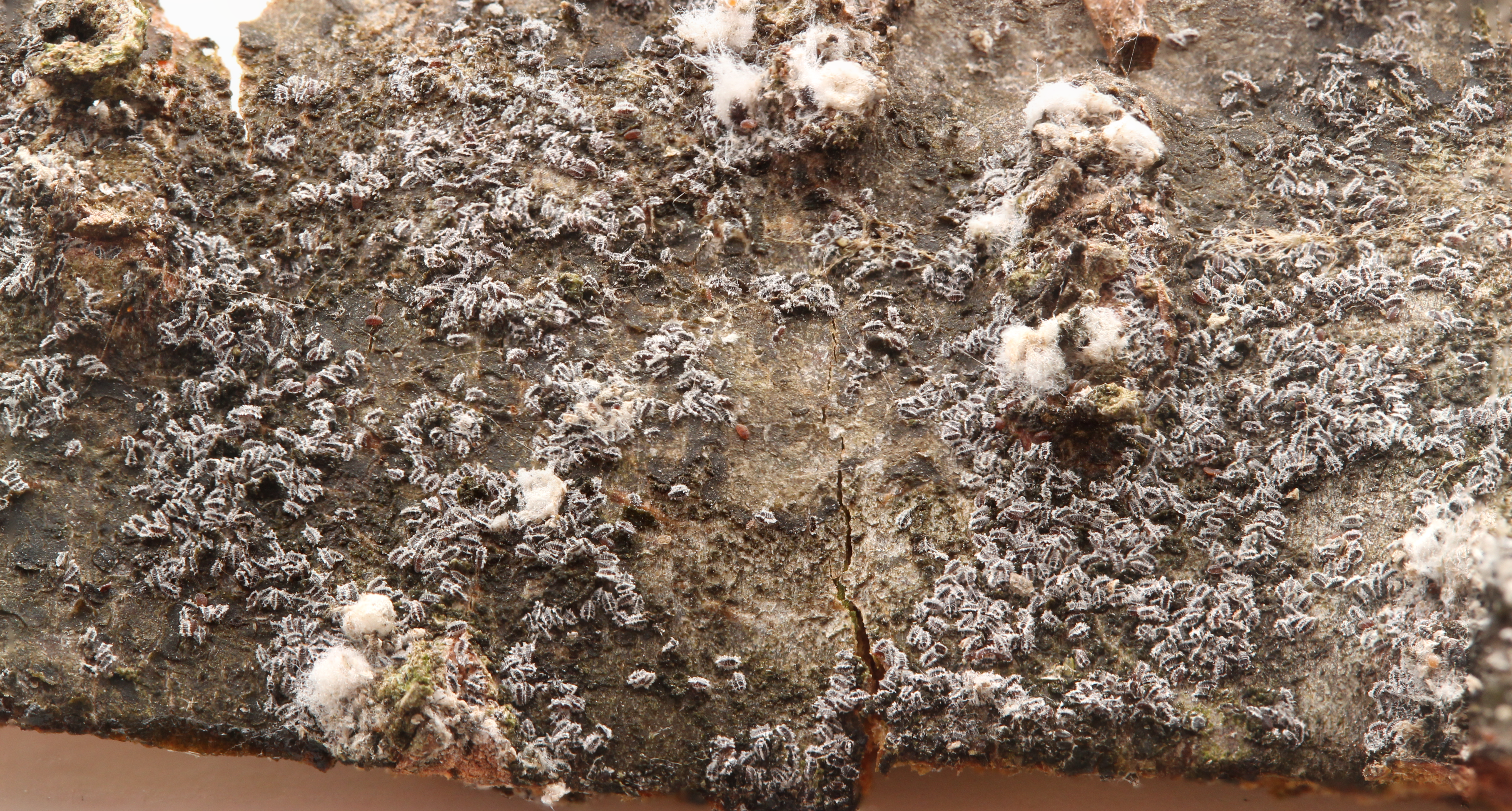
Eggs hatch in two to four weeks, producing reddish-brown crawlers, the only mobile BWA life stage. Newly hatched crawlers move about on the tree and can move to adjoining trees if branches overlap. Mobile crawlers can also be blown by wind or carried by birds, potentially landing on uninfested trees that may be a few feet or many miles away from the original location. Crawlers eventually settle in bark crevices on tree trunks and large branches, or on current-year woody twigs, usually near the buds. Once a crawler selects a feeding site and settles, it will pierce the outer bark with its mouthparts called “stylets” and remains attached to that specific location on the tree for the remainder of its life span. After embedding their mouthparts, the tiny insects transform (without molting), becoming flatter and producing a fringe of white wax around their body (3). Crawlers aestivate (remain dormant) for three to six weeks before they begin to feed and develop. Adelgids feed by sucking sap from cortical parenchyma cells, which are just below the outer bark (3).
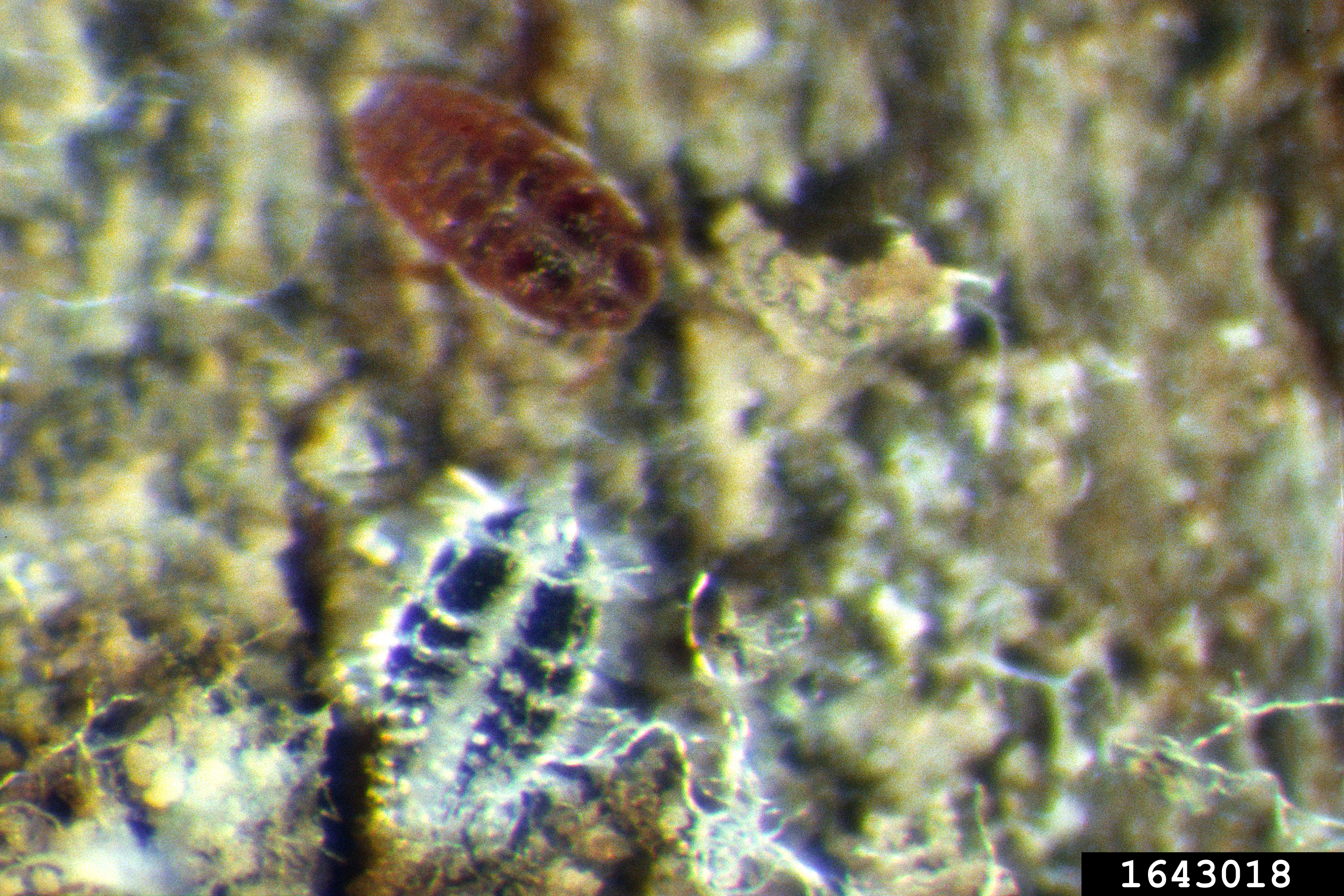
After completing three instars, the adelgids mature into adults in mid-summer and lay eggs (3,5). These eggs hatch within a few weeks, crawlers settle, aestivate, then feed, mature and lay eggs that will become the overwintering nymphs (5). A third BWA generation may occur in late summer and early fall (5,11).
How does BWA affect fir trees?
Although all true firs can be colonized by BWA, vulnerability differs among species. Fir species in the native range of BWA in Europe, which co-evolved with BWA, are much more resistant to BWA feeding than most North American fir species (1,3). European silver fir, Abies alba, for example, produces “pathological bark” in response to BWA feeding. Adelgid mouthparts cannot penetrate this layer of tissue, which helps to limit their impact on the trees (2).
Unfortunately, balsam fir, which is widely distributed in Michigan forests, and Fraser fir, which is a major Christmas tree species in Michigan, are both very vulnerable to BWA. Mortality of vulnerable fir species, including balsam fir and Fraser fir, however, often occurs within 10 years of infestation. Trees can be killed within three to six years if BWA densities are consistently high (1,3).
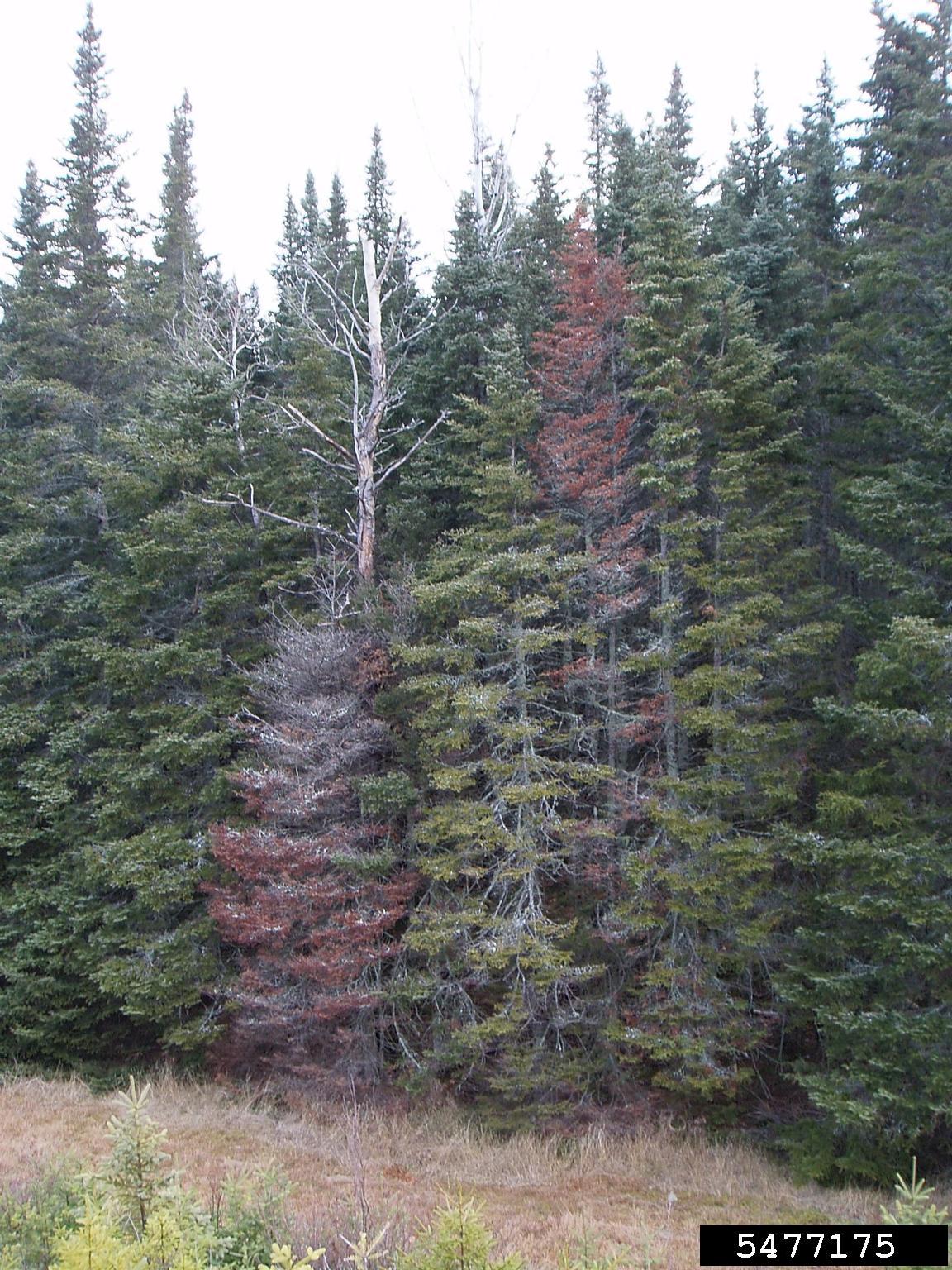

Toxic saliva injected by BWA as they feed irritates cells and triggers a defensive response by cells in the xylem, phloem and cambium (3). These tissues are responsible for transporting water, nutrients and radial growth.
Gouting, a unique symptom that develops as BWA feed near buds, refers to the abnormal swelling and stunted growth of buds and nodes (3,9). Little growth occurs on these shoots and new needles are not produced to replace needles that drop in autumn. As foliage is lost, photosynthesis declines, affecting tree growth and vigor.
Feeding by BWA on the trunks or branches of trees can increase the number of xylem cells, leading to wide but irregular annual rings (2,3). Walls of these cells also thicken. Tracheids, the long, thin water conducting vessels in xylem tissue, become shorter and rounder (2,3).
Reaction wood, called Rotholz (redwood), refers to dense compression wood that results from increased production of traumatic resin cells and ray cells caused by BWA feeding on the trunk. Affected growth rings take on a thick, dark reddish appearance (3,10) rather than the normal cream-colored wood produced by healthy trees. Rotholz is another unique symptom of BWA infestation, although it can be difficult to observe in some trees. If Rotholz is present, counting the number of brittle, reddish growth rings can indicate how long the tree has been infested by BWA (3,11).
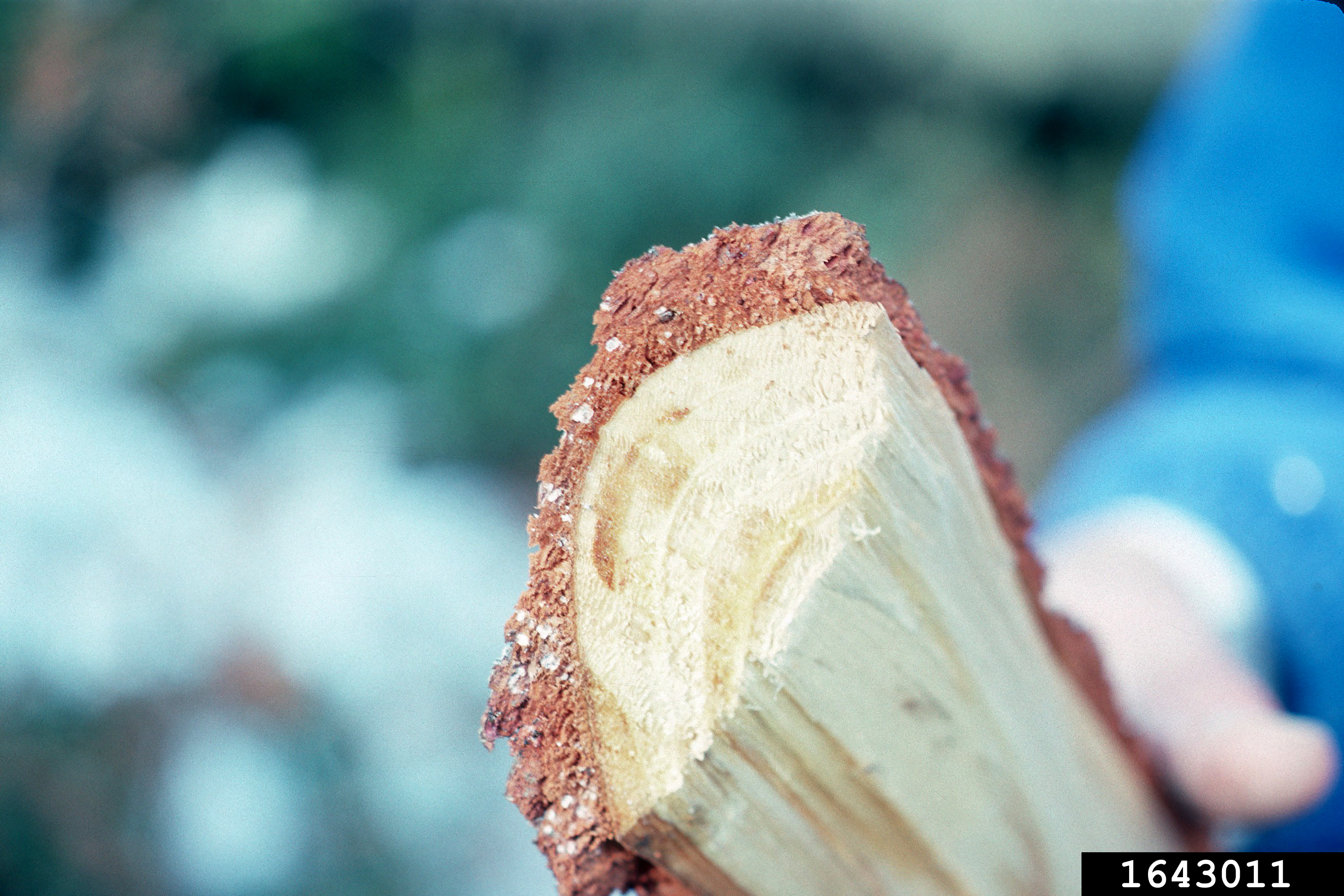
Collectively, the changes resulting from BWA feeding restrict and reduce the ability of trees to transport water from the roots up the trunk and into canopy branches and foliage. Functionally, the trees are severely drought-stressed, regardless of soil moisture levels, which reduces vigor and growth.
What are the symptoms of infested trees?
Detection of BWA in a new area usually occurs when white, wax covered BWA adults or nymphs are observed on the gray bark of the trunk of fir trees. Note that balsam fir trees often have resin blisters or a few drops of yellow-white resin may be present on the bark. These are normal and not related to BWA.
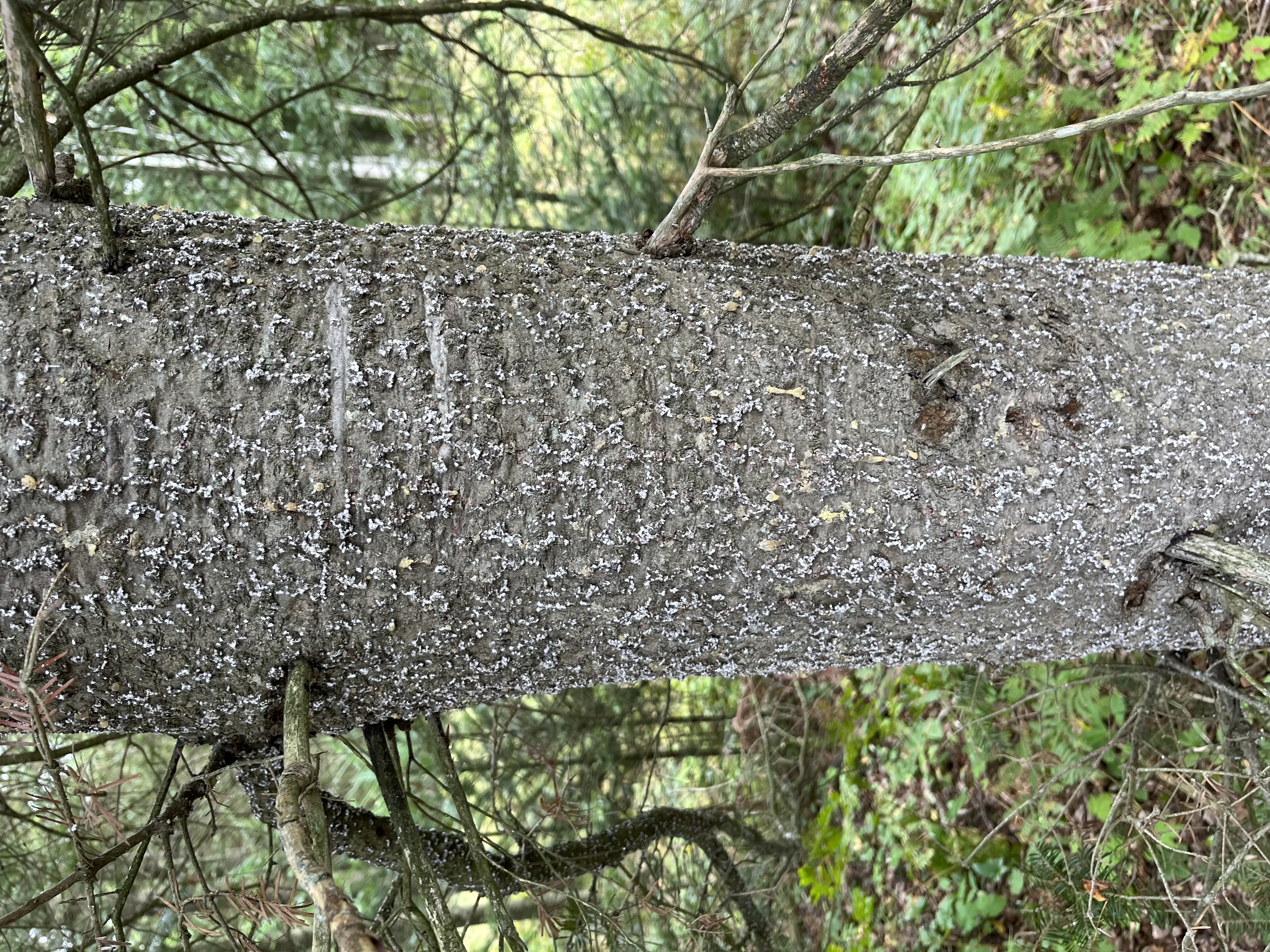
When surveying for BWA, check the base and lower portion of tree trunks as well as any large branches that extend down near the ground. Extremely cold temperatures (e.g., -15 to -30 degrees Fahrenheit) have killed a high proportion of overwintering BWA nymphs in other states (2,8,9). However, nymphs that overwinter below the snow line are insulated and will usually survive extreme temperatures.

Other symptoms include gouty twigs (swelling around the shoot nodes and buds), wilted or curled shoots and drooping branches. Apical dominance may be lost as shoots in the upper canopy die or curl outwards, causing fir trees to have a flat top or a weak terminal leader growing at a 45-degree angle (2,9,11). Flagging—shoots with dead needles—may be present on live trees. As trees die, needles fade from green to bronze to red to brown, usually progressing from inner to outer needles and from the lower to the upper canopy (2,3,10).
Sticky traps are sometimes used in fir stands or Christmas tree fields to monitor BWA egg hatch and crawler presence. Tiny reddish crawlers that blow or fall off infested trees as they disperse can be captured on the sticky surface. Sticky traps are inexpensive and can be easily attached, horizontally and sticky side up, to wooden survey stakes using two or three push pins. Sticky traps should be collected and replaced regularly (e.g., at two-week intervals). Check the sticky trap with a magnifying glass, hand lens or microscope to determine if any reddish-brown crawlers are present. Note, however, that it can be difficult to distinguish BWA crawlers from crawlers of other adelgids such as hemlock woolly adelgid, Adelges tsugae Annand, or pine bark adelgid, Pineus strobi (Hartig). If traps are placed beneath or adjacent to fir trees, however, any crawlers on the sticky cards are almost assuredly BWA.
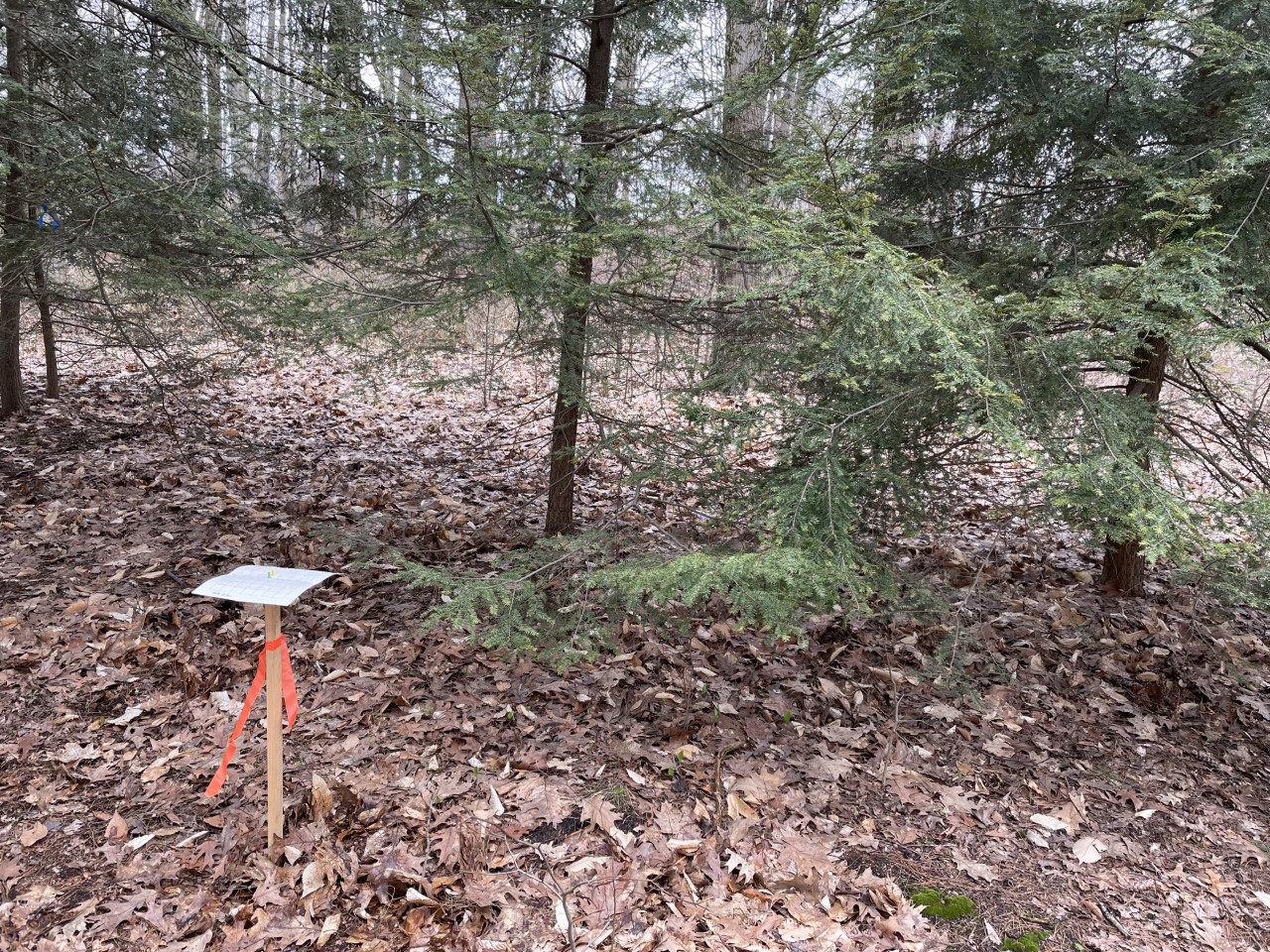
BWA natural enemies and biological control
No parasitoids attack any BWA life stage. Generalist insect predators such as spiders occasionally feed on BWA eggs or other life stages but do not affect BWA population densities. Given this situation, substantial effort and money were allocated over many years for classical biocontrol of BWA. Unfortunately, results have been disappointing. At least 33 species of predatory insects, most from the native range of BWA in Europe, along with species from India or Pakistan, were introduced between 1933 and 1969 into the U.S. and Canada (7,10). Six predatory species, including three beetles and three flies, became established and evidence of BWA predation was observed in some release areas in the U.S. or Canada. However, there remains no evidence that any predators, alone or collectively, can reduce BWA densities below damaging levels or slow BWA population growth, spread or the rate at which infested firs decline and die (1,7,10).
What are the options for managing BWA?
If infested trees are felled in fall or winter, overwintering nymphs will die. They cannot feed and develop on dead, cut trees nor can they disperse to live trees because their mouthparts are already embedded in the tree. Infested trees harvested during winter can generally be transported through uninfested areas safely, especially when temperatures are cold.
Be aware of time periods when crawlers are likely to be active!
Crawlers that are blown in the wind or carried by birds from infested trees to uninfested trees can settle and infest a new tree or even establish a BWA infestation in a new region. When working in an infested stand or field, avoid potentially transporting crawlers on clothing, shoes or equipment.
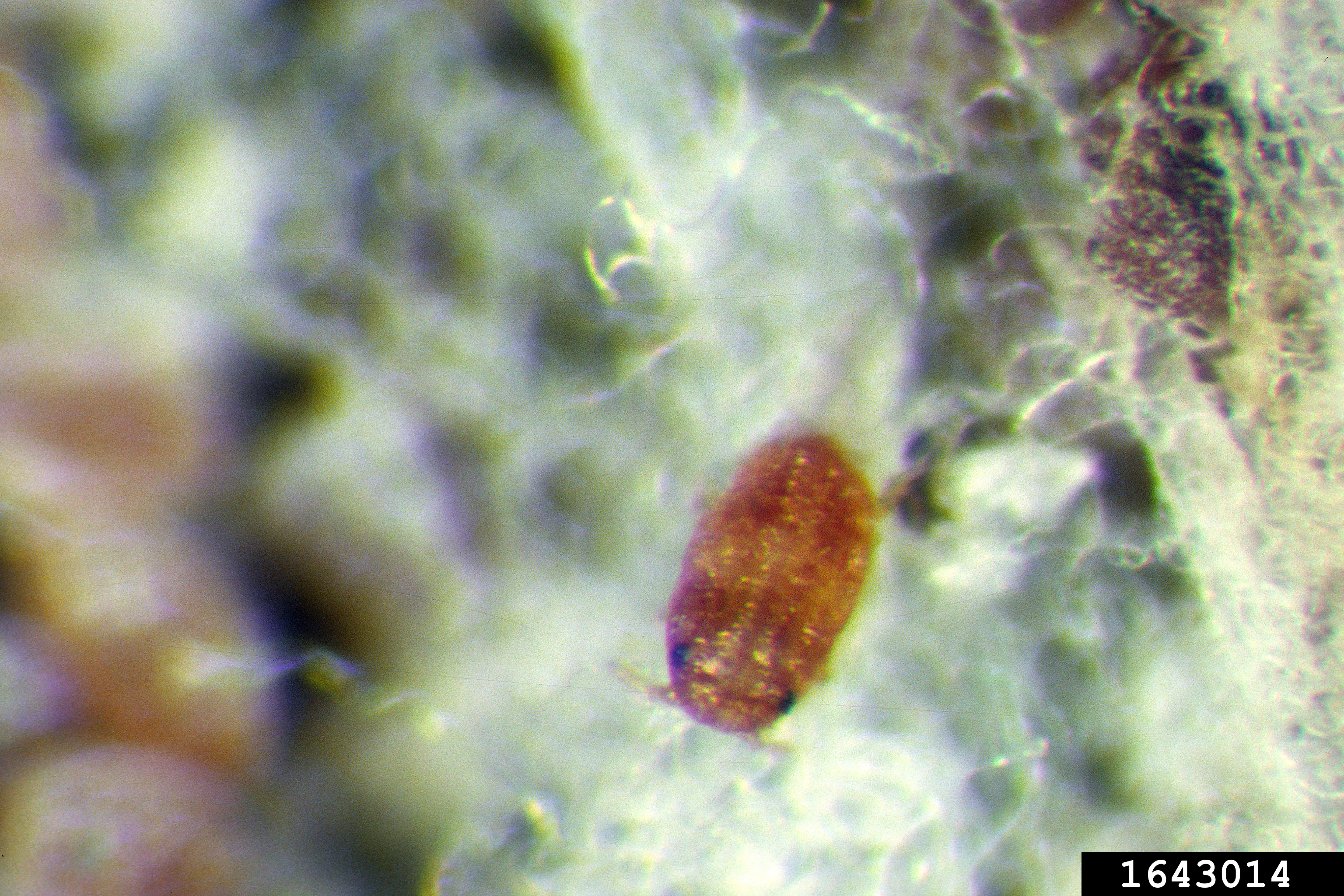
Avoid transporting infested logs, cut trees or infested nursery trees through uninfested areas when crawlers could be present. Studies in North Carolina indicated this risk period typically runs from April through October (11).
Inspect seedlings or saplings that will be planted on forest land, in landscapes or in Christmas tree fields for signs of BWA.
If balsam fir trees in a forest stand are to be felled between April and October, try to drop any infested trees so that they fall away from uninfested trees (10) to reduce chances of crawlers landing on uninfested trees.
Note: Like other sap-feeding insects, such as aphids and scales, nitrogen fertilization benefits adelgids. Extra nitrogen can increase the number of eggs produced per BWA female. Avoid applying high nitrogen fertilizers to infested fir trees.
Chemical control: Several insecticides, particularly synthetic pyrethroids such as esfenvalerate (e.g., Asana), bifenthrin (e.g., Talstar) and cyfluthrin (Tempo) should effectively control BWA crawlers and early stage nymphs (4,11). Crawlers have no protective wax and are especially vulnerable to insecticide sprays as well as sprays of horticultural oil or insecticidal soap. Young nymphs are also somewhat vulnerable because they have not yet produced much of the white wax (wool). However, older nymphs and mature adults are protected by the abundant wax that accumulates around their bodies. Eggs are laid underneath adults and are also well protected. During the growing season, life stages of BWA can overlap, which means that adults, eggs and nymphs can be present on the same trees. This can complicate efforts to target vulnerable BWA life stages with cover sprays.
In some regions, sprays are applied just before or at bud break to target overwintering nymphs just as they begin feeding and if needed, again in late summer or fall to target newly hatched crawlers or early stage nymphs. Monitoring local BWA life stages on infested trees is ideal for timing spray applications.
As with other tiny insects, excellent spray coverage is critical (and often more important than the specific pesticide product) for achieving BWA control (4,11). Spray must thoroughly cover the bark all the way around the trunk including the base of the tree. Note that BWA can live on stumps for several months, especially if a live branch remains on the stump (11). Cut stumps flush to the ground if possible and be aware that stumps, as well as live trees, will need to be sprayed if a field is infested by BWA (11).

Note: It is best to apply horticultural oil or chlorpyrifos when temperatures are at or above 50 F but less than 70 F to avoid injury to foliage of conifer trees.
Unfortunately, some insecticide sprays to control BWA on fir Christmas trees may lead to problems with spruce spider mites. Information from North Carolina indicates bifenthrin (Talstar) will control spruce spider mite as well as BWA (11). If other compounds are used for BWA, monitor treated trees to control mite populations early before damage accumulates.
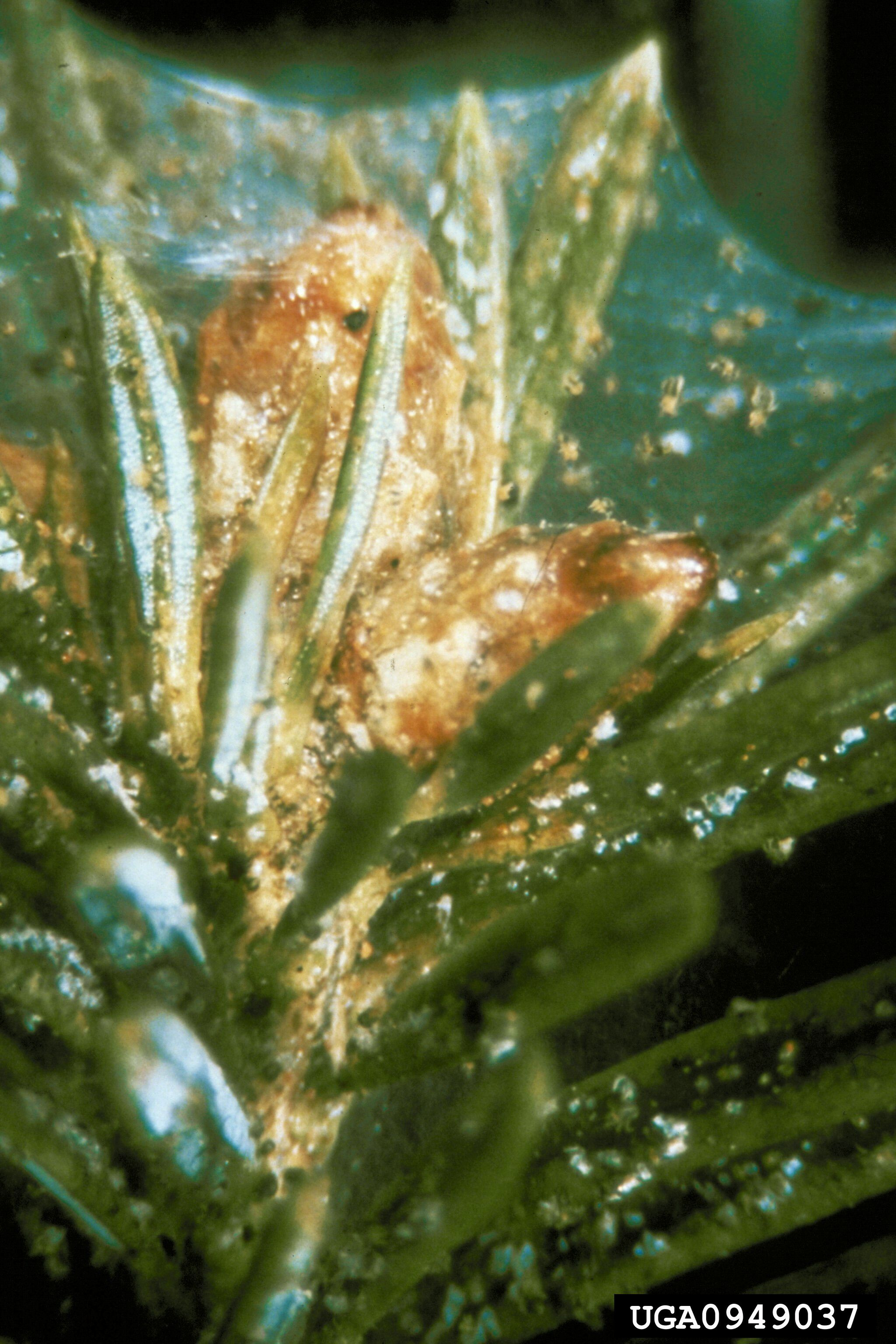
Growers may need to reduce the number of rows they treat at once, increase spray volume per acre and treat trees from at least two directions (11). Spray has to cover bark on the stems and branches as well as the outer shoots. High pressure sprayers are the most effective option, but air-blast sprayers can be effective if the spray penetrates the foliage and reaches the bole of trees. Reducing planting density, minimizing weed pressure and butt-pruning trees are other options to facilitate spray penetration and improve coverage.
Systemic insecticides such as imidacloprid or dinotefuran that are usually applied as a soil drench, a basal trunk spray or a trunk injection may or may not be effective on BWA. Trees transport these insecticides in vessels that conduct water (xylem tissue) up the trunk and into canopy branches and foliage. If trees have only recently become infested, systemic products should be effective, although it can take weeks or even months before BWA in the canopy are controlled. However, when trees have been infested for multiple years, BWA-caused changes in the xylem cells impede water transport (2,3), which will likely limit systemic insecticide movement and efficacy.
To evaluate the effectiveness of any insecticide application, look for fresh white wax on treated trees, indicating live BWA are feeding. Poking live adelgids inside the wax with the tip of a pocketknife will cause dark, purplish liquid to ooze out and mashing the adelgid will leave a purplish smear on the white wax (11). In contrast, dead adelgids simply desiccate (dry up) and produce no purplish liquid (11).
Note: Fir seedlings can be sprayed with an insecticide or dipped in a solution of formulated insecticide such as bifenthrin (Talstar) (11) to protect them from becoming infested by BWA dispersing from larger trees.
How can I report a suspected BWA infestation?
Suspected BWA infestations in Michigan can be reported through the Midwest Invasive Species Information Network (MISIN) online reporting tool (http://www.misin.msu.edu/report/). Alternatively, you can download the MISIN smartphone app and submit a report from your phone (http://www.misin.msu.edu/tools/apps/#home).
Please include a few photos of the suspect tree(s), ideally with a closeup or two of the white woolly adelgids, when you submit your report. You will need to provide the date of your observation and the location of the suspect trees (ideally GPS coordinates or a street address).
Reports can also be submitted to the Michigan Department of Agriculture and Rural Development (MDARD) at MDA-Info@michigan.gov or by calling the MDARD Customer Service Center at 800-292-3939.
References Cited
- CABI Compendium. 2020. Adelges picea (balsam woolly adelgid). https://doi.org/10.1079/cabicompendium.3268. Accessed Jan. 2024.
- Davis, G.A., L. Lowrey T. Eckberg. J.A. Hicke and E. Smirnova. 2022. Characterizing balsam woolly adelgid infestations and associated tree mortality in Idaho. J. For. 120: 361-378.
- Hain, F.P. 1988. The balsam woolly adelgid in North America. pp. 87-109, In: A.A. Berryman, ed. Dynamics of Forest Insect Populations. Springer Science+Business Media, New York.
- Hastings, F.L., F.P. Hain, A. Mngini and W.T. Huxster. 1986. Control of the balsam woolly adelgid (Homoptera: Adelgidae) in Fraser fir Christmas tree plantations. J. Econ. Entomol. 79: 1676-1680.
- Havill, N.P., B.P Griffin, J.C. Andersen, R. G. Foottit, M.J. Justesen, A. Caccone, V. D’amico and J.S. Elkinton. 2021. Species delimitation and invasion history of the balsam woolly adelgid, Adelges (Dreyfusia) piceae (Hemiptera: Aphidoidea: Adelgidae), species complex. Syst. Entomol. 46: 186-204.
- Michigan.gov. 2023. Forest pest alert: balsam woolly adelgid. https://www.michigan.gov/-/media/Project/Websites/mdard/documents/pesticide-plant-pest/planthealth/balsam_woolly_adelgid_pest_alert.pdf Accessed January 2024.
- Montgomery, M.E. and N.P Havill. 2014. II. Balsam Woolly Adelgid (Adelges piceae [Ratzeburg]) (Hemiptera: Adelgidae). pp. 9-19, In: R. Van Driesche and R. Reardon, eds. The Use of Classical Biological Control to Preserve Forests in North America. USDA Forest Service FHTET-2013-2, Sept. 2014.
- NRCAN [Natural Resources Canada]. Balsam woolly adelgid fact sheet. Government of Canada. Balsam woolly adelgid (nrcan.gc.ca) Balsam woolly adelgid (nrcan.gc.ca). Accessed Jan. 2024.
- Ragenovich, I.R. and R. G. Mitchell. 2006. Balsam woolly adelgid. USDA Forest Service Forest Insect & Disease Leaflet 118. Ragenovich et al USFS HowTo BWA.pdf. Accessed Dec. 2024.
- Rideout, L, K. Richardson, D. Alston, R. Davis, D. McAvoy, L. Spears, D. Malesky, L. Herbertson and C. Keyes. 2023. Balsam woolly adelgid. Utah Pests Advanced Fact Sheet. Utah State University Extension Publication ENT-191-18. https://extension.usu.edu/pests/research/balsam-woolly-adelgid-advanced. Accessed Dec. 2023.
- Sidebottom, J. 2019 (revised). Balsam woolly adelgid; Christmas Tree Notes. North Carolina State University Extension Publication. Balsam Woolly Adelgid | NC State Extension Publications (ncsu.edu). Accessed Nov. 2023.
- USDA FS FIA [USDA Forest Service Forest Inventory and Analysis]. 2021. EVALIDator report. Northern Research Station, St. Paul, MN. https://apps.fs.usda.gov/fiadb-api/evalidator. Accessed Jan. 2024.



 Print
Print Email
Email





